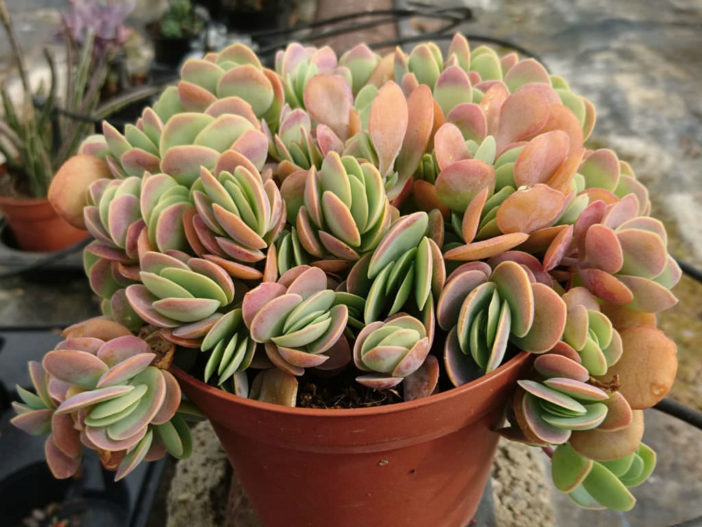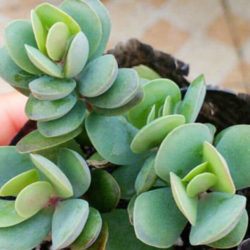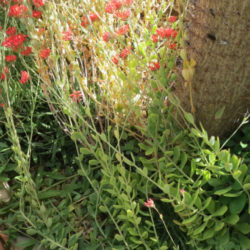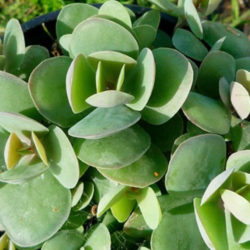Scientific Name
Kalanchoe rotundifolia (Haw.) Haw.
Common Name(s)
Common Kalanchoe
Synonym(s)
Crassula rotundifolia, Sedum subrotundifolium, Vereia rotundifolia
Scientific Classification
Family: Crassulaceae
Subfamily: Sedoideae
Tribe: Kalanchoeae
Genus: Kalanchoe
Description
Kalanchoe rotundifolia is a sparsely branched shrublet with slender, usually simple stems with clusters of blue-green, rarely yellowish-green leaves, usually with a powdery bloom. It can grow up to 4 feet (1.2 m) tall. Sometimes, the stems may have a branch near the base or rarely branched above. The leaves are variable in shape and can reach up to 2 inches (5 cm) in length and 1 inch (2.5 cm) in width.
During the fall and early winter, the plant produces deep red to orange flowers that are yellowish to greenish in the lower part. They are erect and appear in clusters on a branched, up to 16 inches (40 cm) tall stalk.
Origin
Kalanchoe rotundifolia is widespread from South Africa and Eswatini to Botswana and Namibia and extends further into Zimbabwe, Mozambique, Tanzania, and Socotra. It usually grows in shade or half-shade, often in dense stands under trees or shrubs in bushveld.
Etymology
The specific epithet "rotundifolia (ro-tun-dih-FOH-lee-uh)" means "having round leaves" and refers to the shape of the leaves. However, the species have leaves ranging from elliptic and spatulate to triangular or lance-shaped.

Hardiness
USDA hardiness zone 10b to 11b: from 35 °F (+1.7 °C) to 50 °F (+10 °C).
How to Grow and Care
Kalanchoe care is minimal, but be cautious about light levels. Intense sunlight can burn the tips of the leaves. Place pots in partial sun to light shade areas when growing Kalanchoes.
The flowering varieties are highly rewarding for their colorful and long-lasting flowers. They prefer bright, sunny locations, especially in the growing season. Water moderately from fall to winter when the growth is most active. Reduce watering during the hottest summer months when the plants are mostly dormant and winter when the growth slows down significantly. Let the soil surface dry out between waterings. Watch the fleshy leaves for signs of water distress. An ordinary potting soil mix is fine. Feed bi-weekly during the growing season with a liquid fertilizer, or use slow-release pellets.
These small plants require repotting every few years. When repotting, take additional care in handling as the leaves are somewhat brittle and can snap easily. Clay pots work exceptionally well for planting Kalanchoes. Ensure pots can drain well and saucers can empty easily.
Learn more at How to Grow and Care for Kalanchoe.
Links
- Back to genus Kalanchoe
- Succupedia: Browse succulents by Scientific Name, Common Name, Genus, Family, USDA Hardiness Zone, Origin, or cacti by Genus
Photo Gallery
Click on a photo to see a larger version.


